20 Ways to Bring More Equity to Your Literacy Instruction
Merely as yous wouldn't wait every child to vesture the same shoes, y'all know literacy teaching is not one-size-fits-all. The International Literacy Clan constitute "Equity in Literacy Education" to be the #ii topic on its 2022 "What'southward Hot in Literacy" listing. Many educators are thinking deeply how to best identify and meet the literacy needs of diverse students—i of the most complex aspects of educational activity. Of course, there isn't one magic solution for bringing more than equity to your literacy education, but small changes can be impactful. We've gathered this listing of twenty ideas to get you started.
i. Invite your students to teach you.
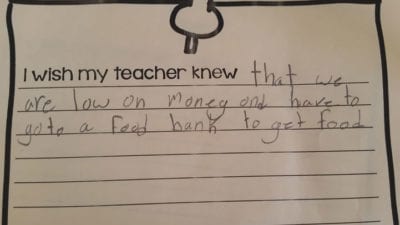
Source: I Wish My Teacher Knew
The first step towards providing equitable literacy didactics is learning more well-nigh your students and their lives. The #Iwishmyteacherknew movement, sparked past educator Kyle Schwartz, makes it clear at that place is a lot our students need united states to know virtually them.
2. Know your students as readers and writers.
Quantitative data definitely informs literacy instruction, but qualitative data is as well essential. Getting to know each educatee every bit a reader and author lets you identify student strengths and needs. Expert Jennifer Serravallo suggests starting your school year with data-gathering strategies like a "kidwatching" checklist, documenting student conversations, and inviting educatee cocky-reflection.
3. Construct a working definition of "fair" with students.
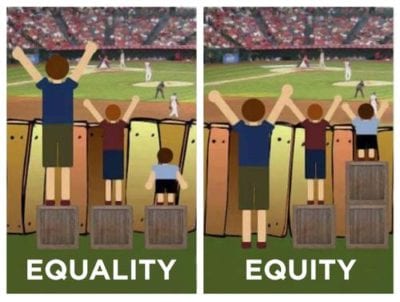
Source: Office of Equity and Human Rights
In an equitable literacy classroom, students will see each other reading, writing, participating, and receiving instruction in unlike ways. It's essential, so, that students tin divide "fair" from "the aforementioned." We love this ring-assist activity from Teach From the Heart to concretize the idea for younger kids that "Fair…is when everyone gets merely what they need!"
4. Set upwards your concrete space with equity in mind.
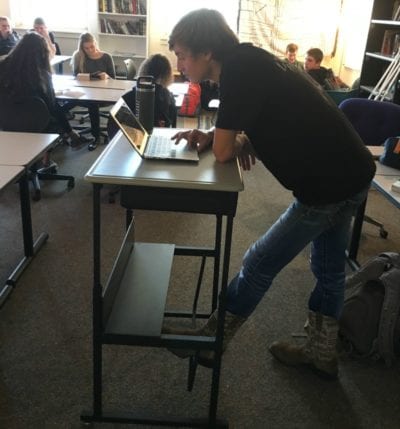
Giving kids what their bodies demand is only equally crucial as delivering appropriate educational activity. Experiment with changes to your seating arrangement, like swapping a U-shape for clusters. Explore standing desks or flexible seating.
5. Offer a range of ways to participate.
Teaching Tolerance reminds teachers, "Modeling equity and inclusiveness calls for a broader definition of participation that includes active listening, written response, artistic response and involvement in small groups. These options should all be valued as classroom participation." Think about how you structure each avenue. Some students do better with more explicit frameworks for responses. Some need supports like defined roles during group work. Establishing discussion norms is key for inviting a variety of educatee voices.
half dozen. Balance options for introverts and extroverts.
The earth is full of successful examples of both. Ship the message that your classroom tin exist, too. For example, some students may be ameliorate able to complete a writing assignment when permitted to talk through ideas with seat mates. Others crave quiet spots to piece of work, and the reassurance that they won't have to share their work until they feel set up.
7. View differences every bit assets.
Look at students' cultural, racial, and linguistic backgrounds every bit capital rather than deficits. Students' experiences position them to approach reading, writing, and chat from unique perspectives. When forming pocket-sized groups for literacy work, consider what each educatee brings to the table. Teachers at San Francisco International High School leverage linguistic diversity by grouping both different and same language speakers. They encourage students capable of mentoring or leading peers to rise to the occasion.
eight. Help students set individualized literacy goals.
When you know students as readers and writers, you can help them set and piece of work towards fitting goals. Try unpacking cess data in a student-friendly way, and coaching students to utilise it to focus their efforts on a particular target.
nine. Mind the gaps.
[embedyt] https://world wide web.youtube.com/watch?v=Ivmbm8fA2pQ[/embedyt]
Couple high expectations for students with targeted support for developing the skills and background knowledge they need to be successful. Try pairing fiction text with nonfiction, teaching reading strategies in the context of compelling text, integrating ELA and content area learning, and proactively supporting vocabulary evolution. Let these rock star teachers at Rex Centre Schoolhouse, a various school in Portland, Maine, inspire you.
10. Plan experiences that build academic linguistic communication.
Bookish language proficiency relates to all aspects of literacy and opens doors for students; it's also an expanse in which many children need focused support. Language-based classroom activities like debates eternalize academic language skills. Constructing arguments, and hearing those of others, provides fantastic experience with a range of language structures and vocabulary.
xi. Accept your go-to listing of supports gear up.
Providing what each student needs doesn't hateful you have to reinvent the wheel every time. Collaborate with colleagues to devise a list of go-to strategies for struggling readers and writers appropriate for the historic period you teach. This list from The Yale Center for Dyslexia & Creativity is a identify to start.
12. Bear witness students the struggle is real—for everyone.
[embedyt] https://www.youtube.com/watch?5=o8gY_4PLdWc[/embedyt]
Gravity Goldberg, educator and author, advises setting the precedent that struggling is a universal part of reading to encourage students to take a growth mindset. Emulate her four-prong conference technique, which includes modeling how she tackles her own reading challenges.
13. Tune into executive functioning needs.
Not all kids develop executive functioning skills automatically. Lack of these skills can hinder literacy progress. To attain literacy goals, kids demand to be able to regulate their emotions, break downward tasks into steps, and have on others' perspectives. Weave executive operation goals into your literacy teaching to help kids develop these important skills.
14. Pull strategy groups.
In improver to same-level small group teaching, pull heterogeneous groups of kids who need to work on the same strategy or skill. Everyone gets appropriately targeted instruction, and less proficient readers and writers go extra modeling and motivation working alongside advanced peers. This post from Third Form Doodles offers some specific guidance to get you started.
xv. Teach kids what's expected in loftier stakes situations.
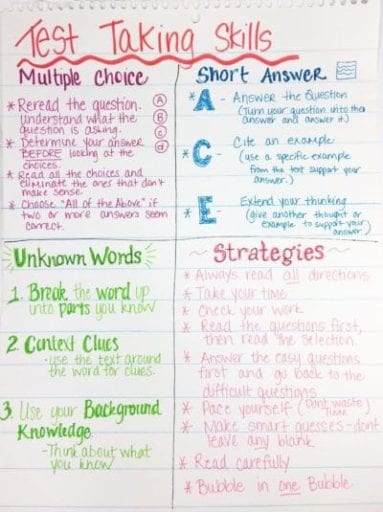
Source: The Owl Instructor
While ideally yous don't spend too much of your instructional fourth dimension teaching to the test, all kids deserve to know exactly what they'll demand to do to be successful. The Owl Teacher gives examples of essential strategies, routines, and vocabulary for test taking, distilled down to one manageable anchor chart. Take a similar approach for interviews, oral presentations, operation reading, or primal writing assignments.
16. Read aloud to kids of all ages.
Educator and actress Rebecca Bellingham shares a powerful anecdote nigh a student who credited her read aloud of Charlotte's Spider web equally enabling him to "get inside a volume" for the first fourth dimension. Go along on reading aloud from Pre-Thou to high schoolhouse to ensure all kids go equitable access to book content and positive reading experiences.
17. Insist on diverse books.
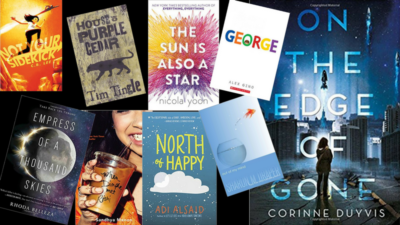
The movement towards making availability of diverse books the norm has gained momentum, just ensuring all children can recognize themselves in books should withal exist summit of mind. Zaretta Hammond, author of Culturally Responsive Education and the Encephalon, urges teachers to "diversify your various books." Seek out books that present multiple or underrepresented perspectives, ones that depict various characters having everyday experiences, and #OwnVoices books.
18. Introduce students to books.
Non all kids volition find the books they need to read on their own. Host a book tasting tailored to your students' reading needs and interests. Or, option a strategy from educator Susan Barber'due south listing of ideas for matching books to students , such every bit "volume speed dating," book talks by special guest, or a volume recommendation hashtag for your course.
xix. Get artistic to increase text admission.
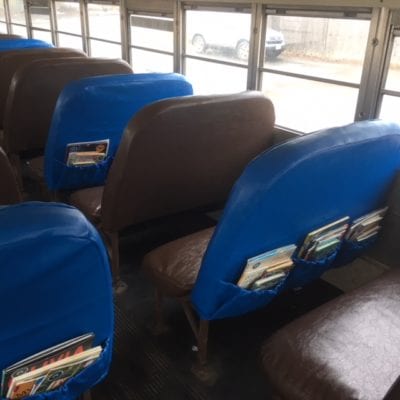
Source: The Coastal Journal
To boost access to text, take a look at where in your building students are spending wait fourth dimension. Strategically fill those locations with books and magazines to heave students' text access. What about the school office, lobby, or arrival and dismissal areas? Consider a Books on the Motorbus program for students with long rides to and from school.
20. Build partnerships to become books into students' homes.
The statistics almost book access exterior of school are grim; enquiry suggests 61% of depression-income children accept no historic period-advisable books at dwelling. Partner with organizations committed to eliminating book deserts to ensure all children tin can extend their literacy learning at abode.
Which strategies take yous used to bring more equity to your literacy pedagogy? Share your thoughts in our WeAreTeachers HELPLINE group on Facebook.
Plus, 50 ways schools tin support early literacy.
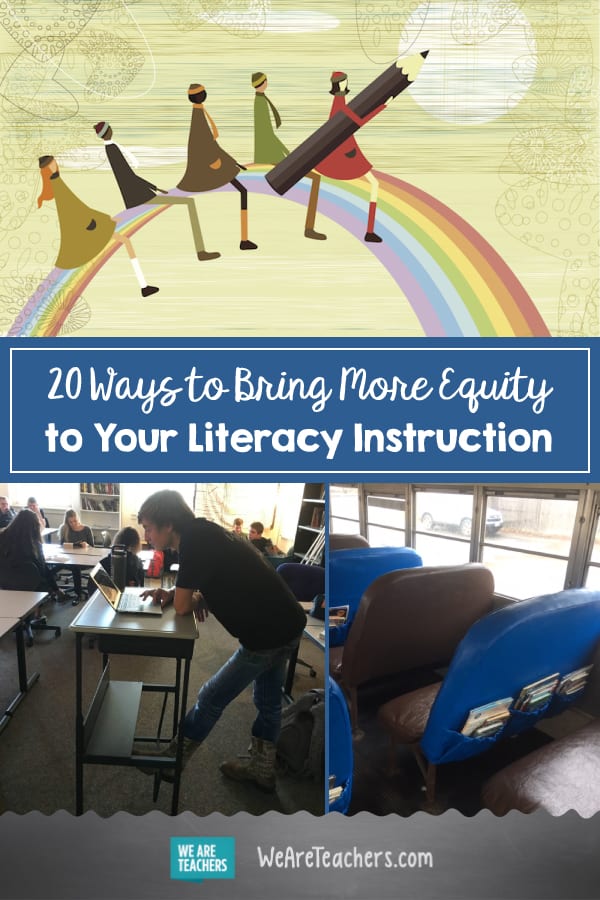
Source: https://www.weareteachers.com/equity-literacy/
0 Response to "20 Ways to Bring More Equity to Your Literacy Instruction"
Post a Comment